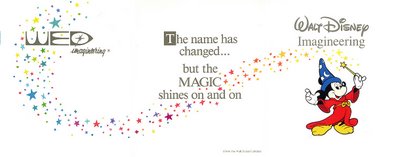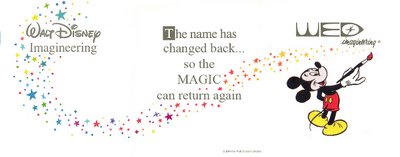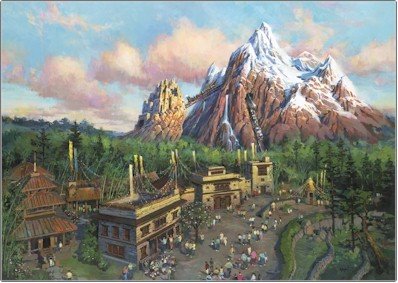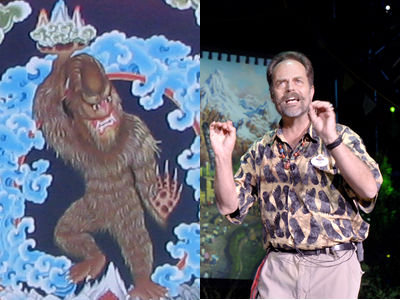

Most visitors to Walt Disney’s Enchanted Tiki Room at Disneyland are quite familiar with the charming pre-show roll call of Tiki Gods and Goddesses in the courtyard waiting area. All eight whimsically carved sculptures come to life and share a bit of their history and mythology before guests enter into the show building.
What most visitors don’t realize is that one figure is missing, arguably the most evocative and magical of the bunch.
Her name was Uti, the Goddess of fishing, and for nearly four decades she towered proudly over the main entryway to the Tiki Room’s tropical garden pre-show, the very first of Master Imagineer Rolly Crump’s fanciful Tiki sculptures guests would encounter during their visit. Holding a fully functioning gas flame torch and sporting door knocker sized hoop earrings, Uti stood inside an enormous outrigger canoe sheltered beneath a towering A-frame thatched roof.

Like most every detail of Disneyland’s classic attractions, Uti wasn’t mere window dressing but had a unique history all her own. Rolly Crump, a stickler for context and storytelling, sought inspiration from the book “Voices on the Wind; Polynesian Myths and Chants” by Katherine Luomala and found Uti’s backstory in a legend regarding Hawaiian gods who taught village fisherman to catch fish at night by holding a torch above their heads when out in their canoes. The fish, attracted by the firelight, could then easily be speared.
From such research Uti was born, a freshly caught fish in one hand and a torch in the other, her seductive flame now attracting Disney guests beneath her elaborate canoe instead of fish.
But Uti and her prime piece of real-estate wouldn’t last through the approaching maelstrom of Disney’s corporate restructuring. It started inconspicuously enough when the gas line to her torch was turned off in the mid-90’s. And then, like a tropical typhoon, the Pressler and Harris era of neglect hit the Tiki Room with a vengeance. Painted wood peeled and rotted, roof thatching deteriorated and the original 60’s tiles on the lanai floor were kicked loose by guest traffic and then stowed away and carried off in the pockets of others.
But the worst was yet to come. In the early morning of January 8, 2000, wood rot caused the support poles on Uti’s giant A-frame home to collapse against the turnstile and juice bar. The Tiki Room was closed for the day and barricades quickly set up. Uti and her noble perch were then unceremoniously removed.


Facilities promised that the entire structure would be restored and re-installed in due time but as the days went on it became clear that this was a pie-crust promise, easily made and easily broken. A series of cheap patio style umbrellas were installed over the entrance while Uti sat grounded in the makeshift boneyard behind Pirates of the Caribbean, still bolted onto her canoe. Eventually a cast member pried her loose and took her home while the hand-crafted outrigger was reportedly thrown away. Being one of a kind, there was no mold to reproduce it.

In March of 2005 the Disneyland 50th restoration of Walt’s famous Tiki Room unveiled a new but much less impressive marquee to the attraction. Though park marketing touted the re-hab as a return to Tiki Room’s original glory the fishing goddess was nowhere to be found.
Uti’s demise is admittedly a very small example of the recent degradation of the Disney Parks. But she stands as a much bigger metaphor for management so out of step with the meaning and magic behind the parks that to them the corporate stratagem, “If it’s broke, don’t fix it” makes perfectly good business sense.
But there’s hope. Plenty of Disney creatives continue to embrace the legacy of the classic Imagineers, firm in their belief that quality is still the best business plan. It’s no accident, for instance, that Uti makes no less than four appearances in the recent collection of Disneyland 50th collectibles, from limited edition figurines to pins and scale models, all of them long since sold out.
To those who truly care, keeping her torch lit is merely the first step on the long road ahead. It’s time for Imagineering to call her spirit home.









